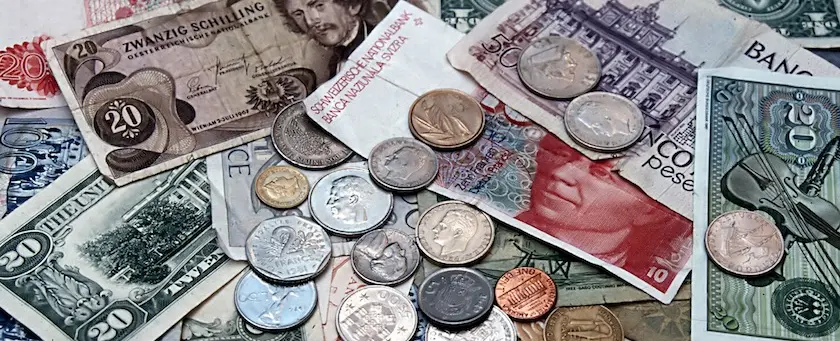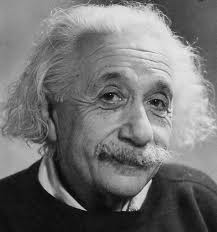Discount Rate meaning: the future value of money
What is the value of the money you possess today in the future?

An important concept in the valuation of a startup is the Discount Rate that gives you an answer to the question: what is the value of money you possess today in the future? An investor who decides to invest their money in your startup with a good idea or invention instead of putting it in a savings account at the bank believes that they can potentially earn more money over time. To determine the valuation of an invention or business idea and to support their investment decisions, professional investors use various analysis methods. The simplest, the cost method, has already been discussed on another page. Before we move on to the other two methods for valuing an invention in a startup, we (unfortunately) still need to cover some theory about the present value and its value in the future. In order to do that, we introduce the concept of "Present Value" (PV) here and on other pages we introduce the terms Net Capital Asset Pricing Model (CAPM) and the DCF method. These three concepts are so important that we need to dedicate several pages of this site to them. We start with the Present Value. At the end of this story, we'll link to the DCF method.
The value of money and the Present Value (PV) of money
The value of your money decreases over time. The Present Value concept is based on the idea that "A dollar today is worth more than a dollar tomorrow," or in other words, receiving 1 dollar in one year's time will not be worth as much as 1 dollar today, even if you are certain that you will receive this dollar in a year's time (which is not always the case). Why is this? This is because a dollar that can be invested today, say at a 10% interest rate (this unrealistic percentage is used for easy calculation), will be worth $1.10 in a year's time in a savings account. Conversely, we can say that with an interest rate of 10%, receiving $1.10 in one year's time is equivalent to $1 today. Or that $1 to be received in one year's time in "today's money" is equal to $1/(1+ 0.1) = $0.90909, which confirms our statement that a dollar today is worth more than a dollar in the future.
So the present value concept is a financial principle that states that the value of a sum of money today is worth more than the same amount of money in the future. This is because money today can be invested and earn interest or returns, increasing its value over time.
When we want to calculate the present value of a future sum of money, we need to take into account the so-called time value of money. For this reason, the future cash flow must be adjusted to account for this time value of money. This is done with the so-called Discount Rate.
The Discount Rate is an important concept in the financial world and is used to determine the value of future cash flows. It is a percentage by which we discount future cash flows to calculate their present value. So it's a way to 'translate' money from the future into today's money.
Why do we need to discount future cash flows? This has to do with the time value of money. Money we have today is worth more than the same amount of money in the future. This is because we can invest the money today and earn interest or returns. However, in the future, we will miss out on that return, and the money will have decreased in value due to factors such as inflation. The fact that money in the future will be worth less is not only about inflation but mainly about the fact that you can invest it now.
The Discount Rate is often based on the risk of the investment and the required return. The higher the risk of the investment, the higher the Discount Rate will be. This is because higher risk means more uncertainty about future cash flows and therefore carries more risk. Additionally, a higher required return often leads to a higher Discount Rate because it requires more compensation for the risk of the investment.
Inflation also plays a role in determining the Discount Rate. If inflation is high, it means that money in the future will be worth less, so the Discount Rate will also be higher.
The Discount Rate is the percentage by which future cash flows are reduced to calculate their present value. The Discount Rate reflects the time value of money, the risk of the investment, and other factors that affect the value of the cash flow. The higher the Discount Rate, the lower the present value of the future cash flow.
When determining the Discount Rate, one must consider the risk of the investment. An investment with higher risk generally requires a higher Discount Rate because there is more uncertainty about future cash flows. In addition, inflation and market conditions play a role in determining the Discount Rate. If inflation is high, the Discount Rate will generally be higher because there is more risk of loss of purchasing power of the cash flow in the future.
In short: by discounting future cash flows with the appropriate Discount Rate, we can calculate the present value. This gives us a better understanding of the value of the future cash flow and enables us to make better decisions about investments and financial planning.
Money Value, Future Value (FV), and Compound Interest Calculation
Let's revisit the example above, where we put $1 into a savings account with a 10% interest rate, and after one year, this dollar is worth $1.10. Suppose you don't withdraw your savings and leave the $1.10 untouched. Then, after another year, the $1.10 in the savings account will have grown to $1.21 = ($1.10 + ($1.10 * 10%)).
We can continue this process indefinitely, as illustrated in the table below.
| r=10% | r=10% | r=10% | r=10% | r=10% | r=10% | r=10% | r=10% |
| Year(n) | 0 | 1 | 2 | 3 | ... | 30 | ∞ |
| Balance | 1 | 1.10 | 1.21 | 1.33 | ... | 17.45 | ∞ |
The above table can be summarized in one of the most fundamental formulas in the financial world, namely
FV = PV * (1 + r)n
Where FV stands for Future Value, PV stands for Present Value, r stands for Discount Rate (in our example, this was the interest rate), and n stands for the number of time units the money is invested for. It is assumed that the discount rate r remains constant over the period n. Additionally, n can be in years, months, weeks, days, and even hours or minutes.
As an example, suppose you invest $10,000 in a savings account with a 3% interest rate. How much will this amount have grown in ten years?
We plug in PV = 10,000, r = 0.03, and n = 10 and get
FV = 10,000 * (1 + 0.03)10 = 13,439
Compound Interest
It is said that Albert Einstein once said: "The most powerful force in the universe is compound interest."

We can illustrate this with an example. Suppose you can invest $100 for a year at 12% interest, but you have the choice of the following two options:
1. Either you receive the 12% interest all at once at the end of the year, or
2. You receive the 12% interest per month in increments of 1% and add it to the invested amount.
What would you choose? The observant reader will have understood that option 2 yields more than option 1. After all,
FV1 portion of 12% = 100 * (1 + 0.12)1 = 112
while
FV12 portions of 1% = 100 *(1 + 0.01)12 = 112.68
This phenomenon is better known as Compound Interest. Compound Interest is interest calculated on both the original invested amount and the interest previously earned. In the table, we already saw how this works, namely in year two, for example, the amount in the savings account had increased to $1.21 and not to $1.20 because $1 was added by calculating the interest over the previously accumulated interest.
A similar effect is also seen in companies that do not entirely distribute their profits but reinvest a large portion of them in their own business. Very generally, if we have two companies with different dividend policies: one company that distributes all profits (for example, as dividends) and one company that reinvests the profits in the business, we see that a company that distributes all its profits will not grow as quickly as a company that retains the profits to expand. A company with a Return On Investment (ROI) of 20%, for example, that uses a large portion of the profit to further grow, is often the darling of Wall Street. Incidentally, many articles and entire chapters have been written about (the relevance of) dividend policy. It is beyond the scope to delve into it further here and now, but it is important to remember that the generated cash during a company's operation can be used for both dividend payments and reinvestment. The latter means that there will be higher profit growth in the future. After the Present Value, we will now introduce the DCF method (Discounted Cash Flow).

